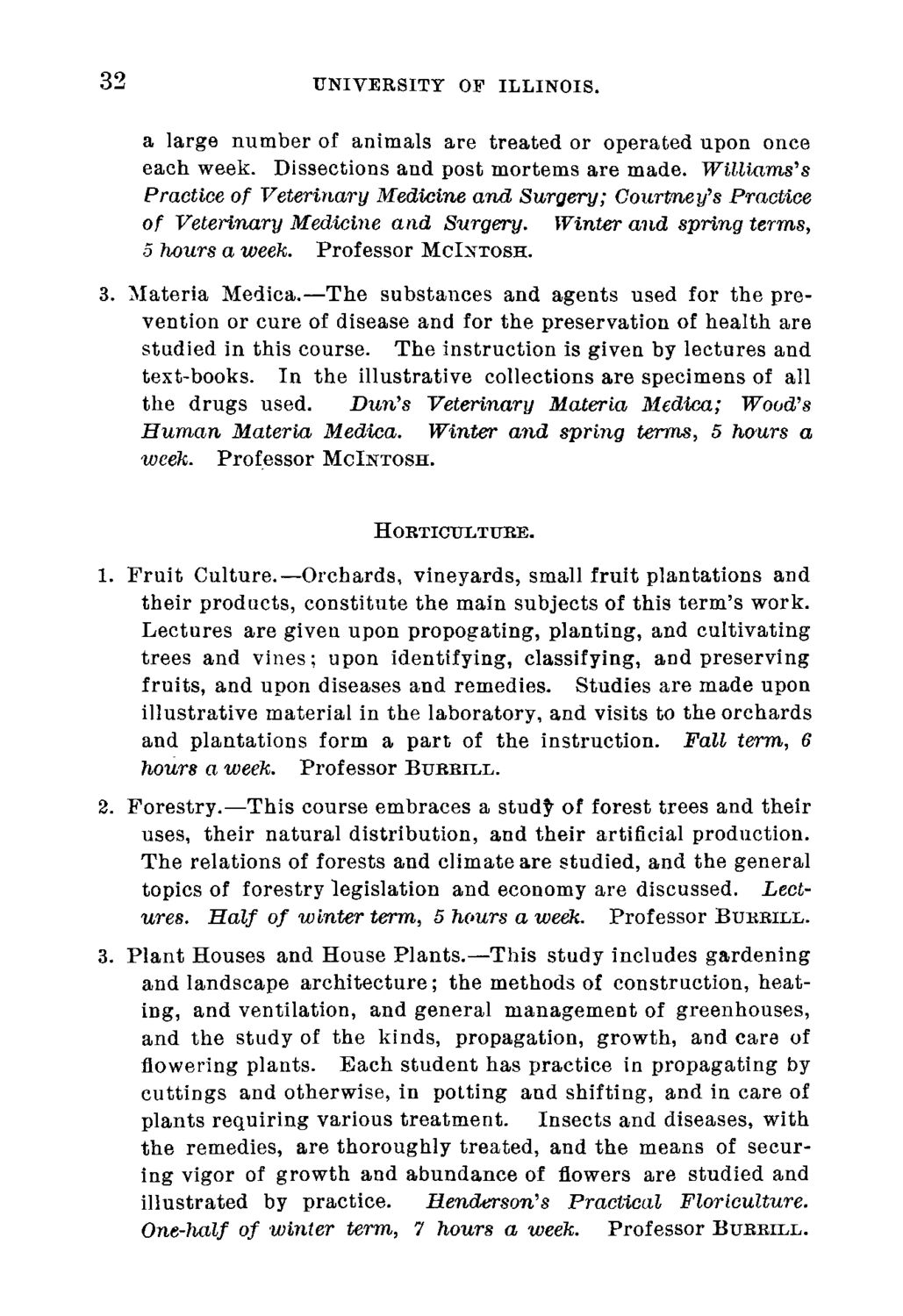| |
| |
Caption: Course Catalog - 1891-1892
This is a reduced-resolution page image for fast online browsing.

EXTRACTED TEXT FROM PAGE:
32 UNIVERSITY OF ILLINOIS. a large number of animals are treated or operated upon once each week. Dissections and post mortems are made. Williams's Practice of Veterinary Medicine and Surgery; Courtney's Practice of Veterinary Medicine and Surgery. Winter and spring terms, 5 hours a week. Professor MCIXTOSH. 3. Materia Medica.—The substances and agents used for the prevention or cure of disease and for the preservation of health are studied in this course. The instruction is given by lectures and text-books. In the illustrative collections are specimens of all the drugs used. Dun's Veterinary Materia Medica; Wood's Human Materia Medica. Winter and spring terms, 5 hours a week. Professor MCINTOSH. HORTICTTLTUBE. 1. Fruit Culture.—Orchards, vineyards, small fruit plantations and their products, constitute the main subjects of this term's work. Lectures are given upon propogating, planting, and cultivating trees and vines; upon identifying, classifying, and preserving fruits, and upon diseases and remedies. Studies are made upon illustrative material in the laboratory, and visits to the orchards and plantations form a part of the instruction. Fall term, 6 hours a week. Professor BUBBPLL. 2. Forestry.—This course embraces a study of forest trees and their uses, their natural distribution, and their artificial production. The relations of forests and climate are studied, and the general topics of forestry legislation and economy are discussed. Lectures. Half of winter term, S hours a week. Professor BUBRIIX. 3. Plant Houses and House Plants.—This study includes gardening and landscape architecture; the methods of construction, heating, and ventilation, and general management of greenhouses, and the study of the kinds, propagation, growth, and care of flowering plants. Each student has practice in propagating by cuttings and otherwise, in potting and shifting, and in care of plants requiring various treatment. Insects and diseases, with the remedies, are thoroughly treated, and the means of securing vigor of growth and abundance of flowers are studied and illustrated by practice. Henderson's Practical Floriculture. One-half of winter term, 7 hours a week. Professor BUBEELL.
| |